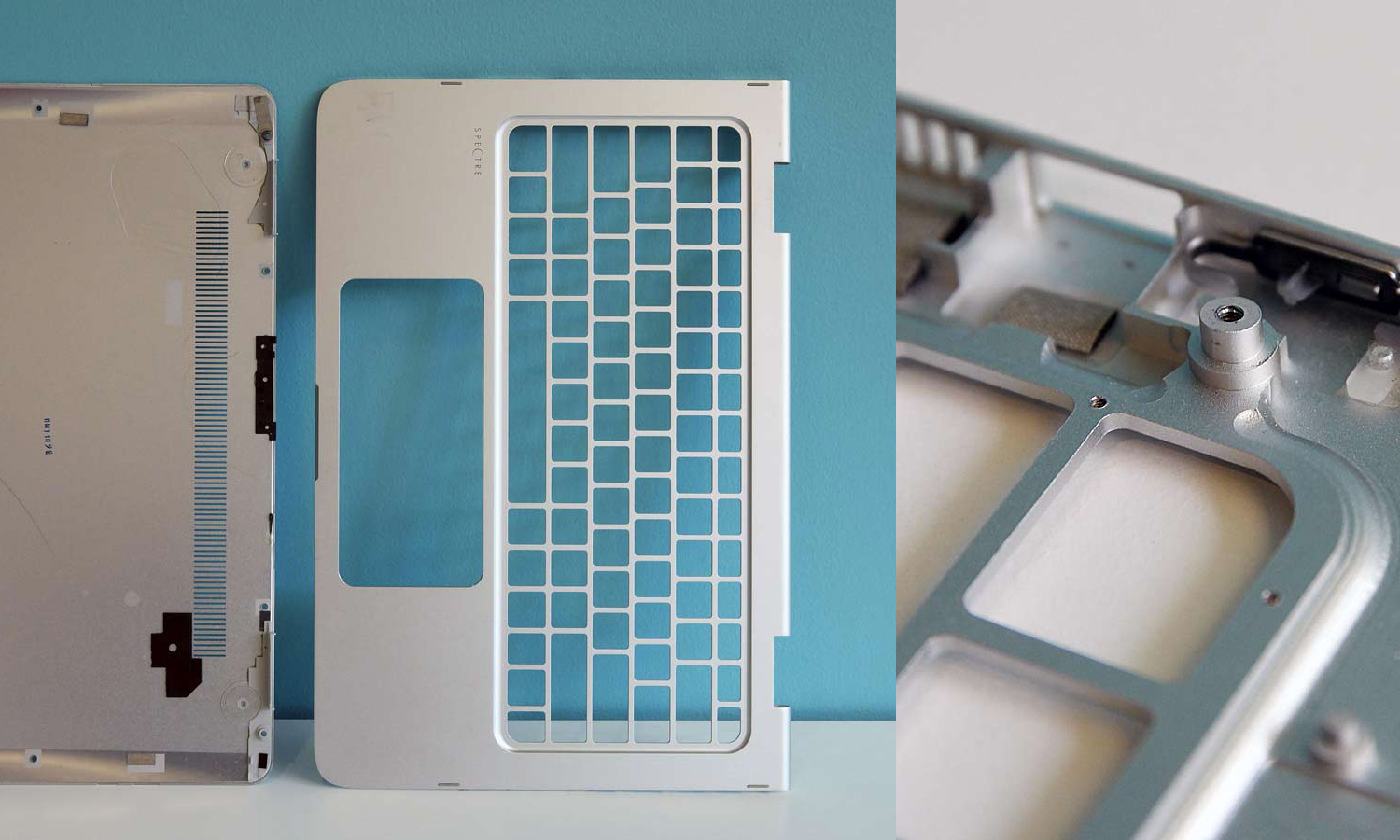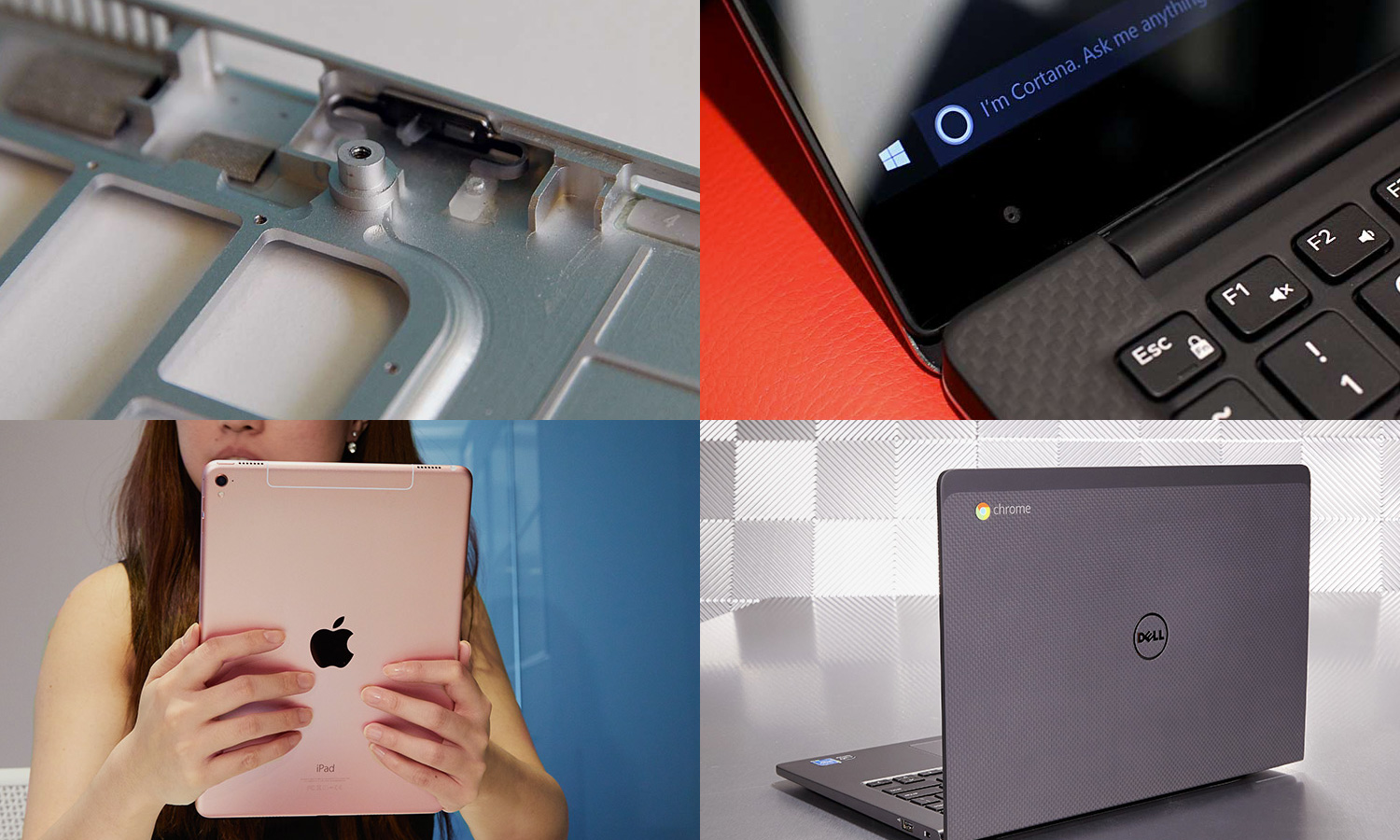Gadget Materials Guide: Aluminum vs Carbon Fiber, Plastic and Glass
Which is better aluminum or magnesium? How about carbon fiber? We take an in-depth look at the most popular materials used in phones, laptops and tablets today.

When you go to buy a phone, tablet or laptop these days, you'll see more marketing devoted to the gadget's chassis materials than its internal components. Unfortunately, unless you've done a lot of research, you may not know what strange substances like "7000-series aluminum" or "2.5D glass" are and whether they provide any real benefits to you.
Fortunately, you don't need a degree in materials science to find out. Here's a glossary of the most popular materials, to help you separate the carbon-fiber wheat from the cheap-plastic chaff.
Materials Glossary
ABS plastic - A lot of devices are made from acrylonitrile butadiene styrene, more commonly known as ABS plastic. It is relatively inexpensive and lightweight, with a density of 1.08 grams per cubic centimeter, but it isn't as durable or as good at conducting heat as metal alloys made from aluminum or magnesium.
Aluminum - Many expensive gadgets have aluminum in at least part of their chassis. On laptops, you'll find the material in the lid and, in fancier products such as MacBooks, in the deck, bottom and sides. The iPhone and iPad have aluminum all around.

Besides looking and feeling more premium than plastic, aluminum is more durable and better at conducting heat, which is a mixed bag. When its internal components aren't pressing a lot of hot air against the chassis, aluminum feels cool to the touch. However, if the inside of an aluminum device lacks proper insulation or airflow to direct heat away from its skin, the outside feels much hotter than plastic.
MORE: The Best Computers That Can Fit in Your Hand
On the other hand, aluminum can also conduct heat away from internal components, allowing them to run better and faster. Regular aluminum has a density of 2.7 grams per cubic centimeter, which is a bit heavier than magnesium (1.7 grams per cc) or ABS plastic (1.08 grams per cc) at the same size.
It's important to note that aluminum is always part of an alloy with other metals, though manufacturers rarely disclose what the mixture is.
Carbon fiber - Lightweight and flexible, carbon fiber, sometimes called "carbon fiber hybrid," consists of strands that are weaved through a polymer (aka plastic) matrix that's often some form of epoxy resin. You find carbon fiber on some of the most expensive lightweight laptops, including the Dell XPS 13 (pictured below), Lenovo ThinkPad X1 Carbon and HP Spectre.

"The carbon fiber itself is literally fiber," HP Product Manager John McCarthy told us. "If you feel unimpregnated carbon fiber, it almost feels like cloth."

The fiber adds a lot of strength to the plastic, weighs very little and conducts heat poorly, making it feel relatively cool to the touch, even when placed above hot components. Carbon fiber often, but not always has a soft-touch, weaved texture. Dell's XPS 13 and Chromebook 13 laptop (pictured above) lids provide a very typical carbon-fiber feel.
Magnesium - Another popular metal that's found in a lot of devices, particularly on the bottom surface of laptops, magnesium is about as durable and heat-conductive as aluminum. However, it's noticeably lighter than aluminum, with a density of 1.7 grams per cc versus 2.7 grams per cc for aluminum. Unfortunately, it's also more expensive than aluminum.
"You would prefer to use magnesium," said Nikhil Gupta, a materials scientist and professor at New York University's School of Engineering. "But there are two problems with magnesium. The first one is higher cost, and the second one is the corrosion."
The iPhone 6 had issues with bending because it uses 6000-series aluminum, but the 6s and 6s plus use 7000 series.
Because magnesium on its own corrodes too easily, Gupta explained, manufacturers need to either add expensive coatings or put magnesium into an alloy with high-priced, rare-earth elements such as neodymium, lanthanum, cerium and yttrium.
CNC aluminum (unibody) - This is aluminum that has been cut using computer numerical control (CNC) machining. A special CNC machine carves the chassis from a giant block of aluminum, a process that creates a single piece of metal for the chassis, rather than having stamped pieces sitting on top of a plastic mold. HP uses CNC aluminum on a number of its premium devices, including the Spectre x360 laptop and Elite x2 tablet. Apple probably uses a CNC process to create its "unibody" MacBooks.

"The benefit of a CNC process is that you can leave material exactly where you need it and you can cut out material exactly where you need it," HP's McCarthy said. "If it's a stamped or a punched sheet, you can only make a skin. If you need to add a screw [to that skin], you need to glue another piece on."
6000-series aluminum - A commonly-used aluminum alloy, 6000-series aluminum also contains magnesium and silicon. It's fairly durable, but not nearly as strong as 7000-series aluminum.

7000-series aluminum - Made from aluminum alloyed with zinc, 7000-series aluminum is significantly stronger than 6000 series. The iPhone 6 had issues with bending because it uses 6000-series aluminum, but the 6s and 6s plus use 7000 series. A number of testers, including AppleInsider, found that the 7000-series chassis would not bend, even under extreme stress.
Gorilla Glass - Made by the Corning company, Gorilla Glass is already installed on 4.5 billion devices, including most smartphones and tablets. The scratch- and drop-resistant glass is made by bathing the material in a 400-degree-Celsius salt bath, which causes the large potassium ions in the solution to replace the glass' smaller sodium ions, leading to a tougher material.
Gorilla Glass is so tough that it's not limited to device screens. Samsung uses the material on the back of its Galaxy S6 phones.
There are several types of Gorilla glass, the latest and toughest of which is Gorilla Glass 4. There's also the prior-gen Gorilla Glass 3, along with Antimicrobial Gorilla Glass and Vibrant Gorilla Glass, which allows manufacturers to print pictures on it.

2.5D glass - While touted as being "between 2 and 3D," 2.5D glass is simply glass with curved edges. You'll find 2.5D glass on a lot of smartphones, and not just obvious models like the Galaxy S7 Edge (pictured above). The curve may actually be below the bezel. The only benefit of 2.5D glass is aesthetic, because it's just as strong or as weak as its manufacturing process. However, most phones use Gorilla Glass.
Which Material Is Best?
Most gadget chassis are made out of plastic, aluminum, magnesium or carbon fiber. Plastic is the cheapest and usually the least attractive of these, but all four materials are capable of providing stylish looks, durability and low weight, depending on how they are deployed.

If you're concerned about getting a device that stays cool to the touch, plastic and carbon fiber should be better than metal, but what really counts is how the gadget dissipates heat. An aluminum laptop with a great internal cooling system will beat a carbon fiber model that has a giant hotspot under the deck.
For screen material, Gorilla glass is the most durable substance in common use. Just to be sure to get the latest version, Gorilla Glass 4.
If you really want to know how well a device will survive abuse, look at the manufacturer's durability claims rather than the name of the material. For example, a strong laptop will have been designed to pass MIL-SPEC 810G durability tests for shocks, vibrations and extreme temperatures. Just because a device has aluminum or magnesium, that doesn't mean it's very strong.
You also need to know about the specific alloy to understand how well it should resist bending and cracking. Device makers rarely disclose this information, however. If you know you're getting 7000-series aluminum, you can have higher expectations. Also, internal structures such as roll cages and reinforced frames have a huge effect on any gadget's ability to survive a fall.
For screen material, Gorilla glass is the most durable substance in common use, but you'll benefit from making sure you get the latest version (Gorilla Glass 4). Also, some manufacturers, such as Motorola with the Droid Turbo 2, use multiple layers of glass and plastic to make their screens even stronger. On tablets, phones and 2-in-1s, screen strength matters, but we wouldn't worry about it at all on a standard clamshell laptop.
Overall, knowing the materials in a laptop, phone or tablet is helpful, but you won't get all the information you need from looking at a spec sheet that just shows you the substance name. Reading reviews, looking at durability claims (MIL-SPEC testing) or viewing a device in person will give you a better impression of how attractive, strong and pleasant to the touch that gadget is.
Sign up to get the BEST of Tom's Guide direct to your inbox.
Get instant access to breaking news, the hottest reviews, great deals and helpful tips.
